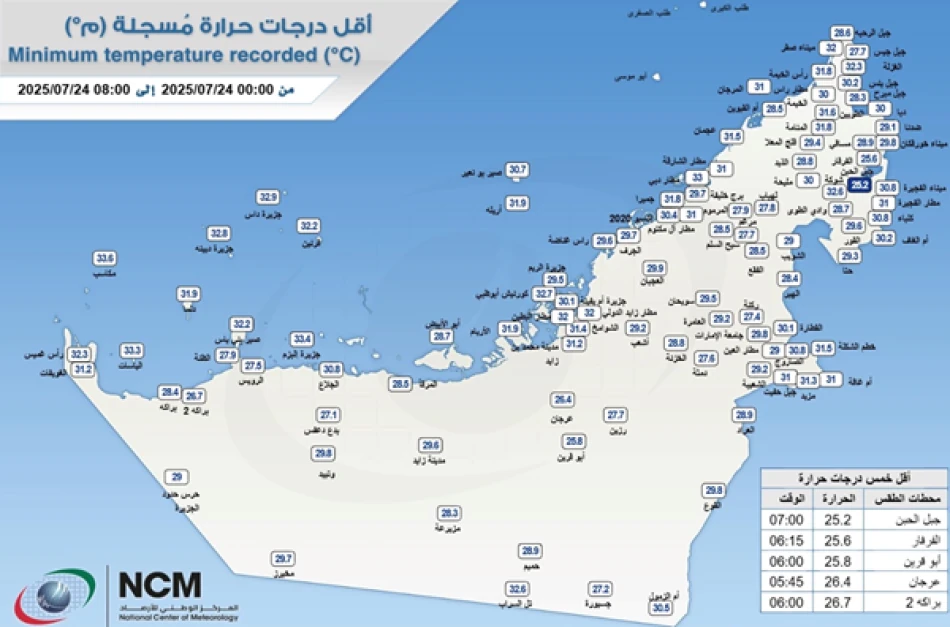
Chilling Records: UAE Logs Lowest Temperature of the Day in Jebel Al Habn, Fujairah
UAE Records Unusually High Minimum Temperature as Climate Patterns Shift
The UAE's National Center of Meteorology reported Thursday that the country's lowest temperature reached 25.2°C (77.4°F) at Jabal Al-Haban in Fujairah, highlighting the nation's consistently warm climate even during cooler periods. This reading, taken at 7:00 AM local time, underscores the Gulf region's year-round heat patterns and raises questions about seasonal temperature variations in one of the world's hottest countries.
Geographic Context: Why Fujairah Stays Cooler
The temperature reading from Jabal Al-Haban in Fujairah is significant for several reasons. Located on the UAE's eastern coast along the Gulf of Oman, Fujairah benefits from mountainous terrain that typically experiences the country's most moderate temperatures. The Hajar Mountains, which run through this emirate, create microclimates that can be several degrees cooler than the desert interior or western coastal areas.
Even so, a minimum temperature of 25.2°C demonstrates the intense heat retention that characterizes the Arabian Peninsula. For comparison, this "coolest" temperature in the UAE is warmer than typical summer afternoons in many European capitals.
Regional Climate Implications
Energy and Infrastructure Demands
Such consistently high minimum temperatures place enormous strain on the UAE's energy infrastructure. When nighttime temperatures fail to drop significantly below 25°C, air conditioning systems work around the clock, driving up electricity consumption and carbon emissions. This pattern is particularly challenging for the UAE's ambitious net-zero commitments by 2050.
Economic Impact on Tourism and Outdoor Activities
The temperature data also affects the UAE's diversification strategy away from oil dependence. High minimum temperatures limit the window for outdoor tourism activities and construction work, traditionally forcing these sectors to operate primarily during winter months. This seasonal constraint influences everything from hotel pricing strategies to major infrastructure project timelines.
Broader Climate Trends in the Gulf
The UAE's temperature patterns reflect broader trends across the Gulf Cooperation Council countries. Saudi Arabia, Qatar, and Kuwait have all reported similar challenges with rising minimum temperatures, which climate scientists link to both global warming and rapid urbanization. The "urban heat island" effect in cities like Dubai and Abu Dhabi contributes to heat retention well into the night.
Neighboring countries have responded differently to these challenges. Qatar invested heavily in outdoor cooling systems ahead of the 2022 World Cup, while Saudi Arabia's NEOM project incorporates advanced climate control technologies designed for extreme heat conditions.
Looking Ahead: Adaptation Strategies
The UAE's approach to managing extreme heat involves significant investment in renewable energy, smart city technologies, and climate-controlled environments. The country's success in hosting major international events despite challenging temperatures demonstrates that effective adaptation is possible, though it requires substantial resources and technological innovation.
As global temperatures continue rising, the UAE's experience managing extreme heat may offer valuable lessons for other regions facing similar challenges. The country's combination of wealth, technology adoption, and climate necessity has created a testing ground for heat adaptation strategies that could prove crucial worldwide.
Most Viewed News

 Layla Al Mansoori
Layla Al Mansoori






